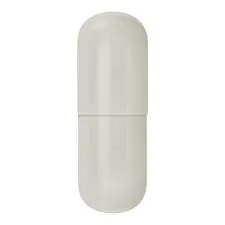
Nov . 05, 2024 21:01 Back to list
propyl methyl cellulose
Understanding Propyl Methyl Cellulose A Versatile Polymer
Propyl Methyl Cellulose (PMC) is a cellulose ether that belongs to a class of semi-synthetic polymer compounds derived from natural cellulose. This compound has garnered significant attention in various fields due to its remarkable properties and versatility. From the food industry to pharmaceuticals and construction, PMC is proving to be an invaluable resource.
What is Propyl Methyl Cellulose?
Propyl Methyl Cellulose is synthesized by the alkylation of cellulose, which involves replacing some of the hydroxyl groups in the cellulose polymer with propyl and methyl groups. This modification imparts unique properties to the polymer, such as enhanced solubility in organic solvents and water, thermal stability, and the ability to form films.
One of the key features that make PMC distinct is its thermoplastic nature. Unlike traditional cellulose, which is only partially soluble in water, PMC can dissolve in both hot and cold water, making it a highly functional ingredient in various formulations. Its unique structure allows it to form gels and stable emulsions, which is particularly beneficial in food production and pharmaceutical applications.
Applications in the Food Industry
In the food sector, PMC serves multiple roles, from a thickening agent to a stabilizer and a fat replacer. Its ability to retain moisture makes it ideal for use in baked goods, where it enhances texture and freshness. Additionally, PMC can be used to achieve desired viscosities in sauces, dressings, and soups without altering the taste, providing a substantial advantage over other thickeners.
Furthermore, PMC is often utilized in gluten-free baking. It mimics the binding properties of gluten, which is crucial for the structure and texture of bread and pastries. By incorporating PMC, gluten-free products can achieve a similar mouthfeel and consistency to their traditional counterparts.
propyl methyl cellulose

Pharmaceutical Applications
PMC’s utility extends into the pharmaceutical domain, where it is used in various formulations, including tablets, capsules, and topical preparations. In oral dosage forms, PMC works as a binder and film-coating agent, improving the mechanical strength of tablets and enabling controlled-release formulations. Its compatibility with other excipients enhances the overall effectiveness of drug delivery systems.
Moreover, PMC is often employed in topical applications due to its ability to form a protective barrier on the skin. This feature is essential in ointments and creams, where it provides a moisturizing effect while allowing for the gradual release of active ingredients. The biocompatibility of PMC also makes it a preferred choice in many pharmaceutical preparations.
Benefits in Construction and Other Industries
Outside food and pharmaceuticals, PMC has made significant strides in the construction industry. It is widely used as an additive in cementitious materials, serving as a water-retention agent that enhances workability and prevents cracking in mortar and plaster. The addition of PMC can improve the adhesion and durability of construction materials, thereby extending their lifespan and performance.
In personal care products, PMC acts as a stabilizer and emulsifying agent, ensuring the consistent quality of lotions, shampoos, and creams. Its ability to provide a creamy texture without greasy residue is highly valued in formulating cosmetic products.
Conclusion
Propyl Methyl Cellulose is a remarkable and versatile polymer that plays an essential role across various industries. Its unique properties enable it to serve multiple functions, from improving the texture of food products to enhancing the efficacy of pharmaceuticals and providing stability in construction materials. As research continues to uncover new applications and formulations, the significance of PMC in modern industry is bound to expand, solidifying its status as an indispensable component of many products we use daily. The continued exploration of this compound’s capabilities heralds an era of innovation, enhancing quality and efficiency across diverse fields.
-
Versatile Hpmc Uses in Different Industries
NewsJun.19,2025
-
Redispersible Powder's Role in Enhancing Durability of Construction Products
NewsJun.19,2025
-
Hydroxyethyl Cellulose Applications Driving Green Industrial Processes
NewsJun.19,2025
-
Exploring Different Redispersible Polymer Powder
NewsJun.19,2025
-
Choosing the Right Mortar Bonding Agent
NewsJun.19,2025
-
Applications and Significance of China Hpmc in Modern Industries
NewsJun.19,2025







